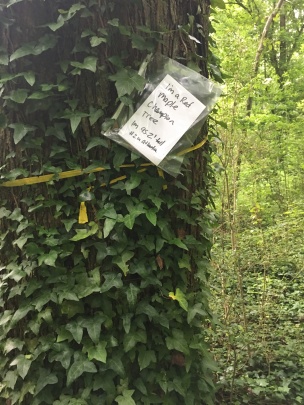A 95′ tall Red Maple tree was discovered in Dearborn Park along the Dearborn Park Trail in Decatur, Georgia. It is one of the oldest and tallest trees in the state of Georgia, though the source has not yet been confirmed.
However, Dearborn Park is in desperate need of volunteers to help remove the invasive ivy and privet that are destroying the trees. This area is near the Dearborn Park Community which consists of W. Dearborn Circle, Park Drive, Candler Street, Chevelle Lane and E. Pharr Rd in Decatur, Georgia.
#trees and invasive ivy are not friends. We can’t save the trees if we don’t remove the invasive ivy and privet! The Dearborn Park Trail is full of both. If we save it from development but lose it to the invasives what have we accomplished Dearborn Park Community?
The following information was pulled from a state government site on how to control invasive nonnative species:
Eradicating invasive species on site is an attainable goal, especially if new introductions are detected early. However, eradication may not be feasible when populations are large and pervasive. When limited resources or the degree of infestation preclude eradication, a more realistic management goal is to control the unwanted species by reducing their density and abundance to a level which does not compromise the integrity of the ecosystem and allows native species to thrive.
Control programs can include manual, mechanical, chemical, biological and cultural components. Landowners and land managers should evaluate their site, the life cycle characteristics of the invasive species and the best available science to determine which control method or combination of methods will be most effective and economical.
Employing a combination of prevention and control measures is an effective way for landowners and land managers to manage invasive species. This approach is often referred to as integrated pest management (IPM) and can include pulling, cutting, targeted pesticide use, biological controls and native species reintroduction.
Where eradication of the invasive species is not realistic, control strategies must strike a balance between ecological impacts of allowing invasive species to spread and the economic realities of control measures. Not all control methods are practical, effective, economically feasible, or environmentally sound for every situation. It’s recommended that landowners and land managers consult most recent science or refer to invasive species websites.



